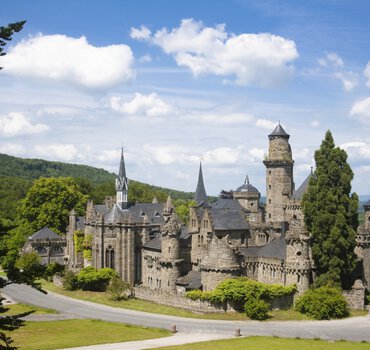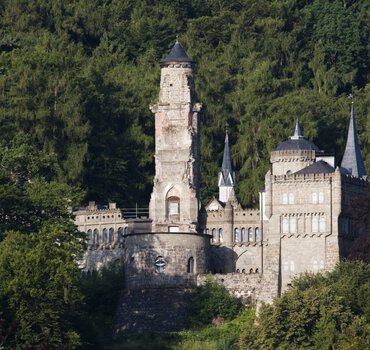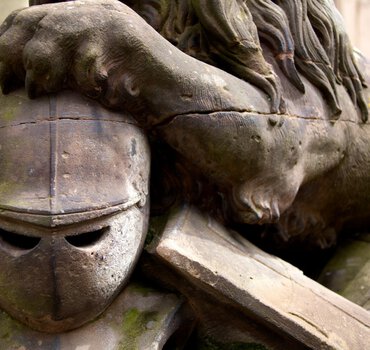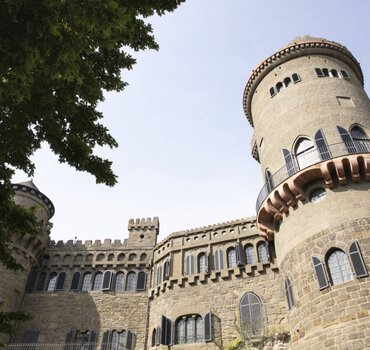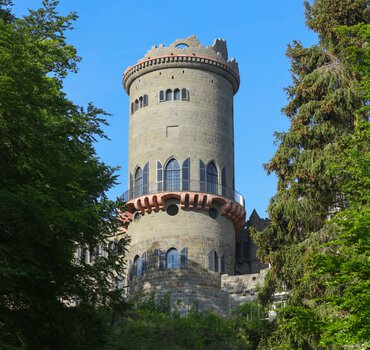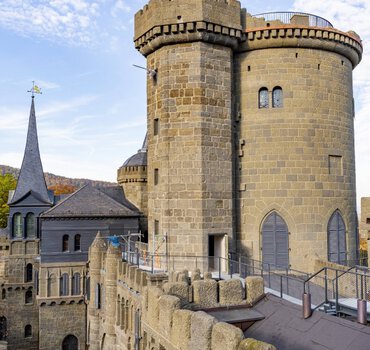Löwenburg
Löwenburg
kassel
The Löwenburg is a pleasure palace built in 1793 in Kassel’s Bergpark Wilhelmshöhe.
The castle, built as an artificial castle ruin, stands above Wilhelmshöhe Castle in the southern part of the mountain park and thus south of the Wilhelmshöhe-Herkules Castle line of sight at around 350 m above sea level on the eastern edge of the Hoher Habichtswald. Löwenburg served as a private retreat for its builder, Landgrave Wilhelm IX of Hesse-Kassel, and in 1821 also became his burial place. In terms of art history, the complex is considered groundbreaking, as one of the first significant neo-Gothic buildings in Germany.
HistoryThe castle, modeled on a hilltop castle, was built according to designs by Heinrich Christoph Jussow between 1793 and 1801, centuries after the actual construction phase of castles in Germany. It is an imitation of a medieval knight’s castle and was deliberately built as an artificial ruin in a romantic, historicizing style. Initially planned as a ruined tower with an outbuilding, similar to the artificial ruins in Wilhelmsbad built by the same builder in 1779, a complete castle complex was finally built, grouped around an inner courtyard. The complex served as a residence for the Landgrave and his mistress Karoline von Schlotheim. In 1821, the Landgrave, who was elevated to Elector Wilhelm I in 1803, was buried in the crypt under the castle chapel. From the outset, the Löwenburg was built from Habichtswälder tuff, which is not very weather-resistant and was available near the construction site and easy to work with.
Second World War and its aftermathUp until 1945, the Royal Air Force and the United States Army Air Forces flew several attacks on Kassel. The city experienced its heaviest attack on October 22, 1943. Due to the armaments industry and above all the dense development in the old town area with its half-timbered houses that easily caught fire, Kassel was early on included in the list of cities for which an incendiary bomb attack seemed particularly suitable, according to the Area Bombing Directive. The keep of the Löwenburg was largely destroyed (only the stair tower with some remains of walls remained) and large parts of the complex, including the kitchen building and the connecting building, were badly damaged. Reconstruction in the post-war years was quite practical and was characterized more by functionality than by attention to detail. In 1957, extensive renovation work was carried out in the Damenbau, the aim of which was to be able to accommodate salvaged inventory from the destroyed keep. A major renovation of the castle took place between 2005 and 2022. Among other things, the keep was made accessible again. In July 2022, the reconstruction was completed and the castle was reopened.
The RP Group has installed a central power supply system in the Löwenburg with various products from the EAQ, EAR and KBU series.
The most important figures:
- Construction from 1793 to 1801
- Destruction 1943
- Renovation from 2005 - 2022
- Opening in July 2022
Source text: Wikipedia
Source images: Museumslandschaft Hessen Kassel
PHOTO GALLERY
